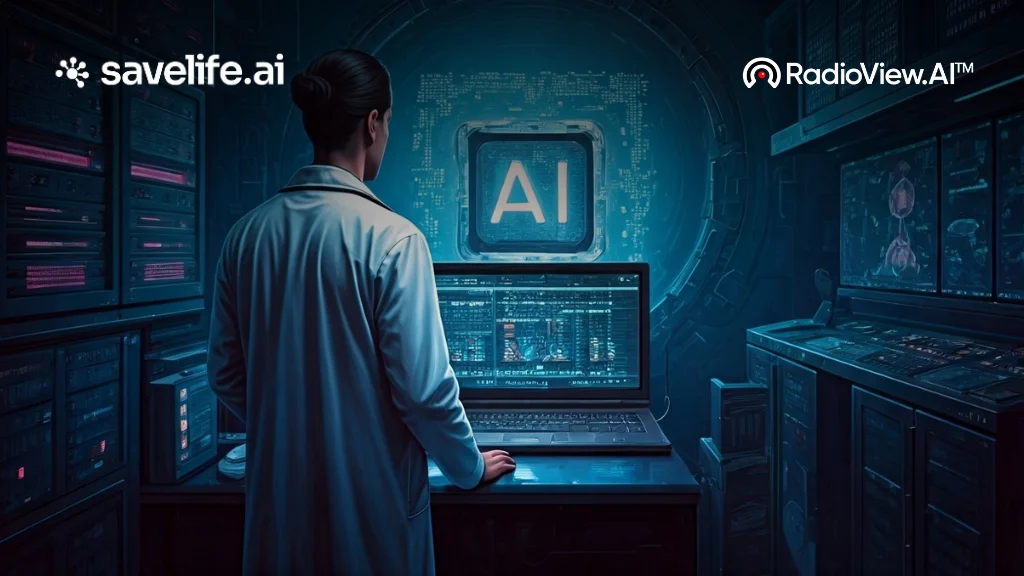Artificial Intelligence (AI) is reshaping the medical imaging landscape, bringing unprecedented efficiency, accuracy, and automation. As radiologists tackle increasing workloads and complex cases, AI integration offers invaluable support by streamlining image analysis, reducing errors, and improving diagnostic precision. With solutions like RadioView.AI, radiologists can leverage the power of AI to improve workflow automation and enhance diagnostic confidence.
Understanding AI’s Core Technologies in Radiology
AI in radiology relies primarily on machine learning (ML) and deep learning (DL). These technologies process vast datasets, and learning patterns that assist in image recognition and diagnostics. While ML uses labeled data to train algorithms, DL employs artificial neural networks, mimicking the human brain’s ability to analyze unstructured data. This allows AI to recognize anomalies in X-rays, MRIs, and CT scans with remarkable accuracy.
Historical Evolution of AI in Radiology
The journey of AI in medical imaging began with the development of X-rays in the late 19th century. Over time, advancements in computed tomography (CT) and magnetic resonance imaging (MRI) revolutionized diagnostic capabilities. The early 2000s saw the emergence of computer-aided diagnosis (CAD) systems, but true AI integration took off with the deep learning revolution of the 2010s. Today, AI enhances every stage of radiology, from image acquisition to final diagnosis.
Key Applications of AI in Radiology
AI integration in radiology extends beyond mere automation. Its applications improve patient outcomes, optimize workflows, and assist in critical decision-making.
AI-Driven Image Segmentation
AI-powered image segmentation enables precise differentiation of anatomical structures, aiding in tumor detection, organ delineation, and vascular mapping. This enhances the accuracy of radiologists’ treatment planning and surgeries.
Computer-Aided Diagnosis (CAD)
AI systems analyze medical images to detect abnormalities such as tumors, fractures, and infections. These tools serve as a second opinion, ensuring no critical details are overlooked.
Predictive Analytics for Disease Progression
AI models forecast disease progression by analyzing historical patient data. For instance, AI can predict Alzheimer’s disease onset by detecting early structural changes in the brain via MRI scans.
Workflow Optimization and Automation
AI reduces radiologists’ workload by automating repetitive tasks, such as image sorting, report generation, and prioritizing urgent cases. Advanced AI-driven platforms like RadioView.AI streamline administrative processes, allowing radiologists to focus on complex diagnoses and improving overall efficiency.
Challenges in AI Integration
Despite its transformative potential, AI integration in radiology is not without hurdles. Addressing these challenges is crucial for widespread adoption.
Data Privacy and Security Concerns
AI relies on vast amounts of patient data, raising concerns about privacy and compliance with regulations like HIPAA and GDPR. Ensuring secure data storage and ethical AI usage is paramount.
Bias and Variability in AI Models
AI models trained on biased datasets may result in diagnostic inaccuracies. Ensuring diverse training datasets helps mitigate disparities in AI-driven diagnostics.
Regulatory and Ethical Considerations
Navigating regulatory frameworks is a challenge for AI implementation in healthcare. Ensuring AI tools meet FDA and CE approval standards is essential for clinical deployment.
The Need for Human Oversight
AI should augment, not replace, radiologists. Maintaining human oversight in AI-assisted diagnostics ensures accountability and prevents over-reliance on automated decision-making.
The Future of AI Integration in Radiology
AI’s role in radiology will continue expanding with advancements in:
- Federated Learning: Enhancing AI model training without compromising data privacy.
- Explainable AI (XAI): Making AI decision-making transparent and interpretable.
- 3D Image Reconstruction: Improving surgical planning and interventional radiology.
- AI-Guided Radiomics: Extracting quantitative data from medical images for personalized treatment planning.
Conclusion
AI integration in radiology transforms medical imaging, enhancing diagnostic precision and efficiency. While challenges remain, AI’s potential to improve patient outcomes and optimize workflows is undeniable. By embracing ethical AI development and ensuring human-AI collaboration, radiology will continue evolving into a more accurate, efficient, and patient-centric field.
FAQs
- What is the meaning of AI integration?
AI integration involves adding intelligent technology to existing systems to improve efficiency, functionality, and critical decision-making. - What is an example of AI integration?
Google Maps uses AI to analyze road data and suggest the best routes for walking, biking, driving, or public transit. - What is the integration of AI in radiology?
AI enhances imaging by using historical data and patient-specific details to enable earlier diagnosis and personalized treatment planning. - What AI is used in radiology?
Convolutional Neural Networks (CNNs) analyze medical images, detect patterns, and identify anomalies accurately. - What is the role of AI in radiotherapy?
AI advances radiotherapy by aiding tissue segmentation, refining dose planning, providing decision support, and predicting treatment outcomes.
Reference: https://pmc.ncbi.nlm.nih.gov/articles/PMC10487271/


